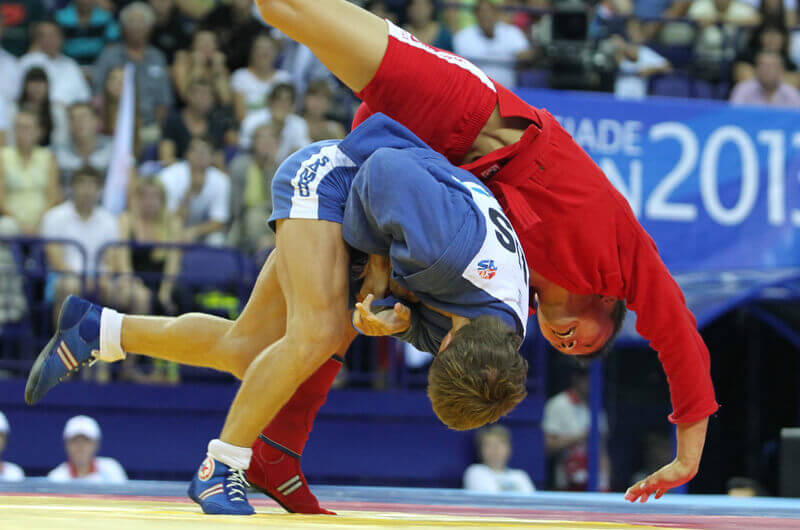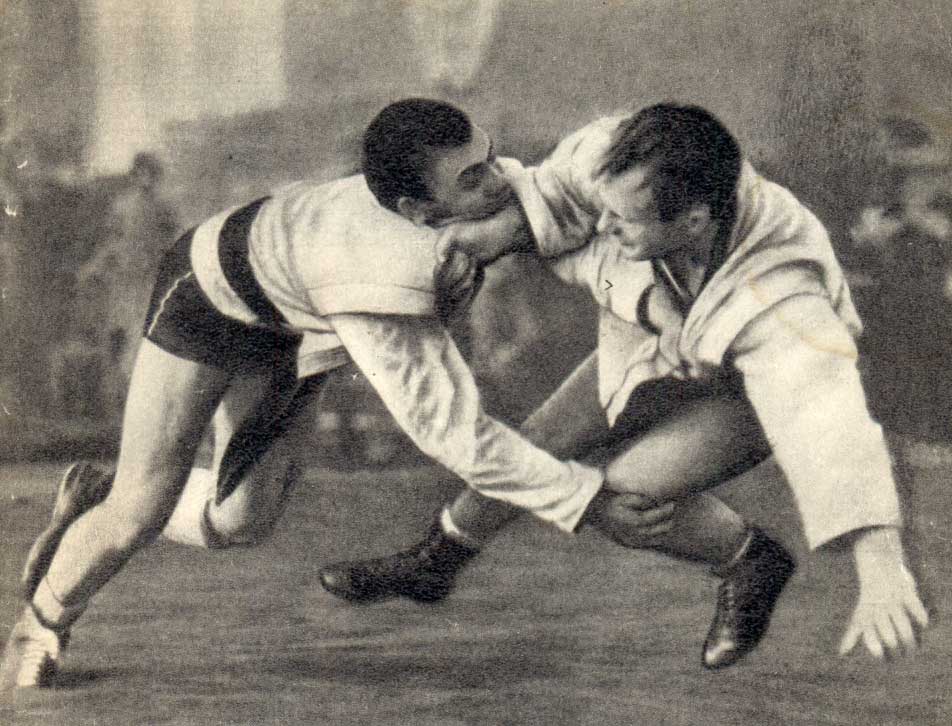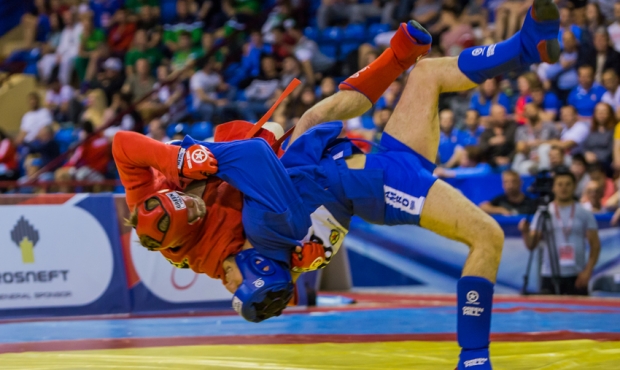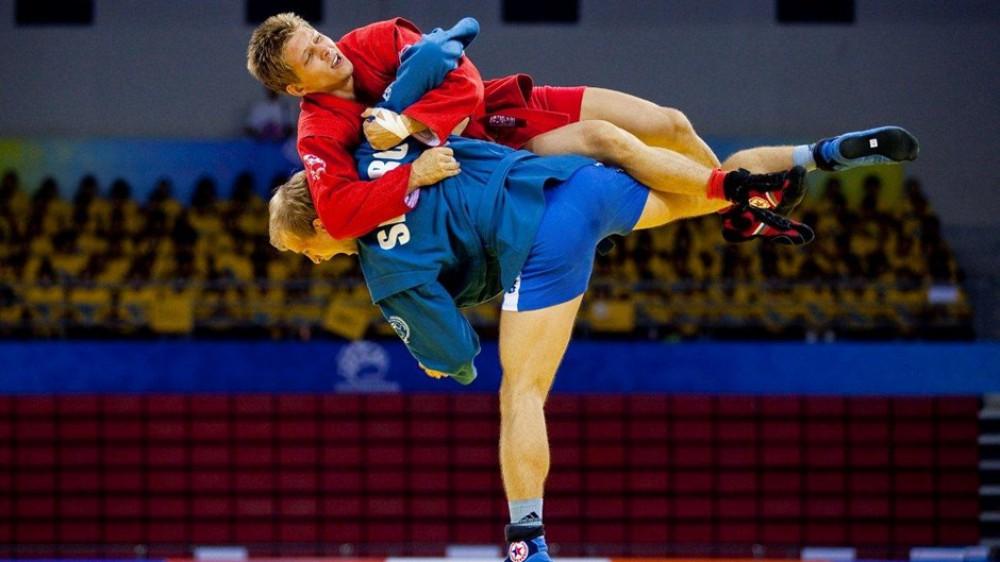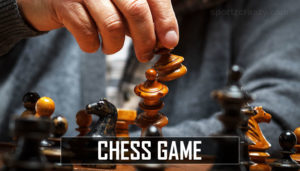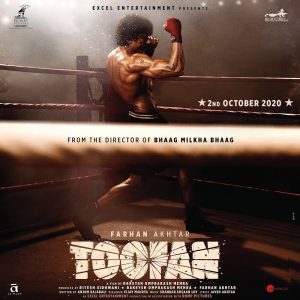What is Sambo?
Sambo is a Russian martial art and sport, originating in the Russian Soviet Federative Socialist Republic, in the Soviet Union. The word itself is an acronym, standing for ‘SAMozashchita Bez Oruzhiya’, which can be accurately translated to ‘self-defense without weapons’. As a martial art and sport, it was developed in fairly recent times, first showing itself in the early 1920s, and was intended to be a mixed style of the most deadly and efficient techniques of other styles.
History of Sambo
Founders
Sambo was developed by Viktor Spiridonov and Vasili Oshchepkov, two of the biggest names in the War Department and Counter-intelligence respectively:
Viktor Spiridonov
Viktor Spiridonov was a distinguished World War I veteran. After joining the Army at the age of 17, he earned NCO stripes. After finishing Kazan Infantry School, he fought in the Russian Japanese War: honorable actions and unfailing leadership in which got him the Order of Saint Anna, a prestigious Chivalry award, and the Order of Saint Stanislaus, a Russian Knighthood. In the First World War, he sustained several serious injuries, due to which he was hospitalized for a year and later Dismissed Honorably, with a promotion to the next rank.
Vasili Oshchepkov
Vasili was orphaned at a very early age and sent to study in Japan. Starting from September 1907, he studied at the Theological Seminary in Tokyo. His first introduction to martial arts, specifically to Judo, was in this seminary. Through the recommendation of his coach, he was able to enter the Kodokan Judo Institute, where, on June 15, 1913, he received the first level of a black belt, Shodan. 4 years later, while on a business trip to the Country of the Rising Sun, he became the first Russian and the Third European to receive the second level of a black belt, Nidan. This was even more impressive because, in those days, Black Belt levels went up to 5, unlike present times as there are 10 levels now.
Anatoly Kharlampiev, a student and acquaintance of Vasili Oschepkov, is also considered to be a founder of Sambo since he produced many refinements and improvements on the original styles.
All You Need to Know about Karate Belt Order and Colors
Their Independent Styles
Originally, Spiridonov and Oshchepkov had developed different styles. Oshchepkov’s style was more brutal and deadly, focusing on aggression and incapacitating strikes, often called ‘Free Wrestling’, and ‘Catch Wrestling’ in the west. A major factor of his style was immense body strength, requiring loads of physical training on top of training in the martial art itself.
Comparatively, Spiridonov’s style was a lot softer and less deadly than Oshchepkov’s style, focusing on defense and soft disarming strikes rather than incapacitating strikes. It was designed to not require a large amount of bodily force because Spiridonov had sustained injuries in the War that prevented him from using his full strength.
Since then, due to the contribution, confusion and hard work of many professional martial artists, the styles have merged seamlessly to become the speed-based martial art known today as Sambo.
Creation
In 1923, Oshchepkov, Spiridonov, Anatoly Kharlampiyev, I.V Vasiliev and other such famed hallmarks of Russian Martial Arts worked together on a Government Grant to vastly improve the Red Army’s poor hand-to-hand combat capabilities.
Spiridonov developed a style which incorporated the deadliest techniques and practical aspects of the various martial arts that he had been trained in, and Oschepkov wanted to make a simple, easy to use a system similar to Judo. Kharlampiyev is considered to be the ‘Father of Sambo’, but should rather be called the ‘Father of Sports Sambo’ since his connections and intelligence helped immensely as they led the USSR’s sports committee to accept Sambo as a sport.
Styles of Modern Sambo
Today, there are many officially recognized branched and avenues of Sambo. As it improves on techniques from other types of martial arts, Sambo principles and techniques can be applied to a smorgasbord of other combat sports and training styles. However, there are two main variations recognized worldwide, and they are:
Sports-themed Sambo- This style is very similar to old Catch Wrestling and Judo, but has significant differences in protocol and rules. It allows various leg locks but forbids chokeholds. It focuses on throwing, movement, and submissions, and can be said to be an improved, refined version of Spiridonov’s original, movement-focusing style.
Combat-themed Sambo- A style of Sambo made almost exclusively for the Military, it resembles styles of modern mixed martial arts, featuring unique forms and techniques of striking and grappling. It allows hit which Sports-Sambo doesn’t: for example, headbutts and groin strikes. Protection is similar to Sports-Sambo, as competitors have to wear jackets, but sometimes also head, shin, and knee protection. It is largely based on Oshchepkov’s style but requires less bodily strength.
The Sambo Uniform
The Sambo practitioners usually wear a red or blue themed outfit, traditionally called a ‘kurtka’. It resembles a Judo top and belt, but in a twist, comes with wrestling oriented shorts and shoes matching the colour of the uniform. The uniform does not have any special markings on it to denote rank or competitive rating, and sports rules state that an athlete must possess a set of both blue and red uniforms, as they are randomly assigned to colour-teams.
Ranking System of Sambo
Unlike most other martial arts, Sambo does not use colours of headbands, belts or other such accessories to denote rank, instead preferring to use a competitive system. Various organizations are sanctioned to distribute these ranks, for different types of achievements, such as outstanding matches or on some rare and special cases, coaching. People with these ranks are termed ‘Masters of Sport’, and some Institutions which distribute these ranks are FKE, International Combat Sambo Federation and the American Sambo Association.
List of 10 Various Types of Martial Arts Forms around the Globe
Notable Champions of Sambo
There have been many exceptional Sambo fighters to date. Whether they were Russian, American or otherwise, they are a testament to how easy to learn Sambo is, and are something in which both the Sambo associations and their respective countries take great pride in:
Fedor Emelianenko:
- 4-time Combat Sambo World Champion
- 6-time Combat Sambo Russian National Champion, 100kg-division
- 2-time Judo Russian National Bronze medalist
- #1 Heavy-weight MMA fighter, for seven years
Marko Kosev:
- 5-time Combat Sambo World Champion
Vitaly Minakov:
- 4-time Combat Sambo World Champion
- 4-time Russian National Champion
Alexander:
- 3-time Sambo World Champion
Pushnitsa:
- 2-time European Champion
- 9-time USSR Champion
- Merited Master of Sports from USSR


